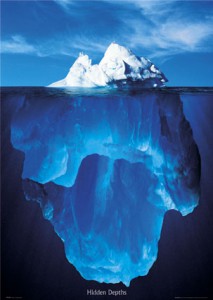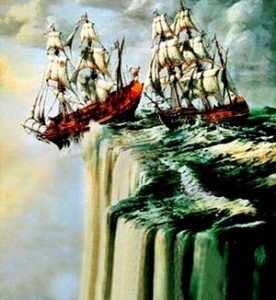A core notion in every Pipelines project is depth. When depth is used in a transformative and enhancing way on preexisting maps or satellite imagery, we can speak of deep mapping.
Depth in a prairie city like Edmonton is a welcome oxymoron. One that is revelatory of the need to further explore such relatively understudied Canadian urban formations.
Moreover, the affective landscape of the Canadian prairies has been occupied lately by a single politico-economical model of depth: one that sees the oil sands industry conglomerate and the spectacle of its technocratic exploitation of the soil (a spectacle that includes its contestation) as an overbearing paradigm of the senses of verticality, penetrability, permeability, porosity that would otherwise accompany other representational domains of society, among which history is the most obvious.
Depth employed with maps, as it is the case with our choice of the Hypercities platform, can quickly become an apparatus of historico-political interpretation and critique. The functional nature of mapping presupposes that every map —in conjunction with its readers— constitutes a self-supportive semiotic system of encoding/decoding. But this nature also possesses fictional implications, so to speak, insofar as it is closely related with the constitution of the self in the form of a narrative identity. Tom Conley has most convincingly proposed the latter in his 1997 study The Self-Made Map where he examines the birth of modern mapping “from the standpoint of the production of imaginary space, nation, and selfhood”. Conley writes:
“There seems to be a correlation between mapping and the growth of a new medium —literature— in early modern print culture. […] An unforeseen theatricalization of the self acquired its autonomy through modes of positioning that are developed in both textual and gridded representations of reality. […] The self would acquire its identity through the creation of a space that bears the presence or the reminder of the mapping of its signature. The self ascribes to its being the illusion of autonomy and self-possession when it can be configured as a textual diagram.”
Conley’s conception owes a great deal to the works of Michel de Certeau on the radical unknowability of the Other as a constitutive part not only of discourses on spatiality, but also of the historical conscience attempting to represent this spatiality in accordance with its own normative models. Following De Certeau, this is how Conley perceives the power and singularity of literature in regards to maps:
“There emerges a literary persona that destabilizes programmatic issues by virtue of a system of inscription and spacing that runs contrary to the ideas being advocated. This intermediate area of play allows the author to contend with or to move about what would otherwise be an increasingly fixed or fixating space defined by perspectival grids. This persona becomes the other —the space, place, and person of alterity— who resides in and inspires the writer as a prototypical cartographer.”
We are projecting (and looking for) our sense of self across wide expanses of space that we perceive as somewhat already mapped out in our mind, or at the very least ready to be gridded, delineated, compartimentalized, and named. The literary mind intersects with the cartographer’s mind at the dawn of modernity because it used to be that the reader would find himself with an increased agentivity before an inevitable incompleteness or inaccuracy of the map that he would feel the need to make up for. Filling the blanks in the map or prolonging it beyond its borders was not just a necessary for accurate orientation; it was equally an operation of the imaginary, in which one would add himself to an incomplete world. Discoverers could become poets of some sort. However, it remains that this incompleteness of the maps together with this agentivity of their reader/interpreter would still be part of a rationally, and most of the time narratively ordered system in which the world would open itself to its own unknowability just enough for the action of individual world-ordering to set in (in the form of quest or adventure, or more prosaically in finding one’s bearings). Edward Casey’s use of the concept of spatial survey —which interestingly for us can pertain to landscape painting and photography as much as to topographical delineation and land registry— explains best how this relation to mapping is tied to individual projects of sovereignty, self-fulfillment and world-ordering. Casey writes that in surveying:
“The viewer is suspended un an indefinite viewing area that lacks determinate location. […] The viewing itself is felt to take place at a considerable distance, though a distance that represents a privileged access to the scene surveyed below. The privileged access stems from the basic sense that the viewer, however distantly situated, nevertheless belongs to the surveyed space.”
We should note that this model differs from De Certeau’s oft-commented (and oft-trivialized) conception of the “voyeur” in the city in that it does not refer to any type of space per se; and more importantly in that it recognizes the surveyor as an agent in the world he’s surveying, bestowing him with a power very similar to the one wielded by the literary writer, or reader.
We can see that the formal incompleteness of the two-dimensional map has never taken the form of a world-threatening incompleteness. It has always been counterbalanced by the presupposed fullness of its reader’s interiority, his personal history, and his rightful place in the perceived legitimate history of the world he is taking part in. As Christian Jacob argues in his as yet untranslated monumental essay L’empire des cartes, we can find an exact counterpart to this in the operations of literary fiction, with the notion of “enunciative shifter” (coined as embrayeur énonciatif in French narratology):
“The enunciative shifter makes us pass from one regime of discourse to another, from the « I, here, now » that constitutes the context of the enunciation, to the « he/she, there, then » that is integrated in the enunciation itself. The map possesses a similar capacity. […] It implicates the shifting performed by the subject of the enunciation, who is situated in time and in space, on the subject about which the enunciation is being made, who is equally situated in time and in space. […] The map is a space of projection where the deictic gesture of storytelling and the gaze have an equal capacity to situate us in a space that is being enunciated, in a time that can be the future, or the past. Thus the map can support various types of narratives and discourses (fiction, planning, utopia, politics, etc.).” [we translate]
The map “implicates” the whole process of enunciation. In doing so the map forecloses a certain escapist desire of fiction to separate worlds on different planes of existence, to render worlds so distinguishable that they become incompatible, and that the world of fantasy can eventually act as a critical counterpart to the real one, for example with utopia on a social scale, and with the novel on an singularized one. But the fictional world and the world where it is being imagined can be as drastically and formally distinct from one another as they possibly can, they won’t be so when it comes to the mapping operations that spatialize them. In other words there will be only one spatial referent: only one grid along with its system of interpretation. In this respect mapping becomes akin to the workings of the institutionalized historical narrative, which is capable of integrating fiction insofar as fiction remains treated as a document. Indeed we look at maps always with the same set of eyes; and those eyes have learned how to look historically inside the world whose initial mapping has made all other maps possible. Our mindscape is rooted in the historically mapped world. Following this, we see that, ultimately, the authority of the semiotic system of two-dimensional mapping has remained unbreached. And so, consequentially, has the authority as well as the geographical or topographical realism of the corresponding narratives.
We can only narrate as far as we can imagine ourselves mapping.
But today has us experiencing a crisis of that system. Today, incomplete maps still belong to the systemic authority that precedes only insofar as this authority now points to archaic forms of narrative genres: swashbuckling tales, yarns of exploration, conquest and discovery, either personal or collective. Our world in its current GIS technical stage, for its part, does not accept the idea of an incomplete map for too long. This is because the encoding/decoding operation of mapping has done away with most of its former need for a subjective mediation. The ground zero of the mapping psyche has shifted from “down here”, where the agency of the reader/interpreter was taking place, to “up there” with the satellites. The importance of this is not that the ancient dream of a self-sufficient technological representation of the world has been made reality. This has been done long ago, with radars, etc. It is rather that, on the one hand, people are now called upon to perform this dream on an individual basis with the widespread availability of portable GPS interfaces, but on the other hand the narrative model of authority has vanished that used to tie a fullness of the sense of self with the geography and its visual representation. We are narratively alone in front of today’s mapping systems. But another way to put it is that we are more free in front of them. And there lies a new paradox: with GIS and portable screens of all sorts, the self-sufficient semiotic operation of mapping needs less and less of a subjective intervention, but at the same time it has become more and more imbedded in the sphere of everyday life, if not in the body itself (handheld devices; Bluetooth headphones). We are performing maps that perform the world for us. In the streets, at home, through commuting, etc. What is this doing to our narrative imaginaries?
One consequence of what precedes has captured our imagination at Pipelines. If the newfound self-sufficiency of maps calls for the concentration of data on a single plane, then achieving depth in mapping will, on the contrary, necessitate a plurality of sources on a plurality of planes. In short, the depth is never that of one map. Nor does it take place inside the map. Depth appears only when there are several maps on top of one another. Likewise, if the efficiency of maps calls for a simplification of the encoding-decoding-interpreting semiotic process, then achieving depth in mapping entails the reinjection of discursive heterogeneity (many maps = many possible discourses). It also involves the repositioning of the map-reader’s agency. Because contrary to common belief, the multiplication of layers of maps does not produce a “better” view of reality. Its effect is to replace the interpreter at the centre of the semiotic nexus, forcing him to make more connections, in turn leading to more narratives. For this reason, the urban narratives that Pipelines wants to elicit with crowd-sourcing are not of the personal, biographical kind. Regardless of these narratives’ later content and orientation, their initial nature will be to provide connections and articulations between the heterogeneous layers of maps along with the regimes of visualization and the worlds of affects that each of them opens. Depth in mapping equals more creativity in narrating, and also more possibilities in “reading” the city. In an urban context especially, this can become the opposite of privatized, productive, result-oriented efficiency, and thus the re-appropriation of numerous spaces of everyday life.
— Daniel Laforest
—————-
Edward S. Casey, Representing Place. Landscape Paintings and Maps, U. of Minnesota Press: 2002, p. 160-161.
Tom Conley, The Self-Made Map, U. of Minnesota Press: 1997, p. 2-3 and 87.
Christian Jacob, L’empire des cartes, Paris: Seuil, 1992, p. 47-48.
**See also Michel de Certeau, L’écriture de l’histoire, Paris: Gallimard, 1975. (Transl. by Tom Conley as The Writing of History, New York: Columbia U. Press, 1992). Especially chapter 5.






